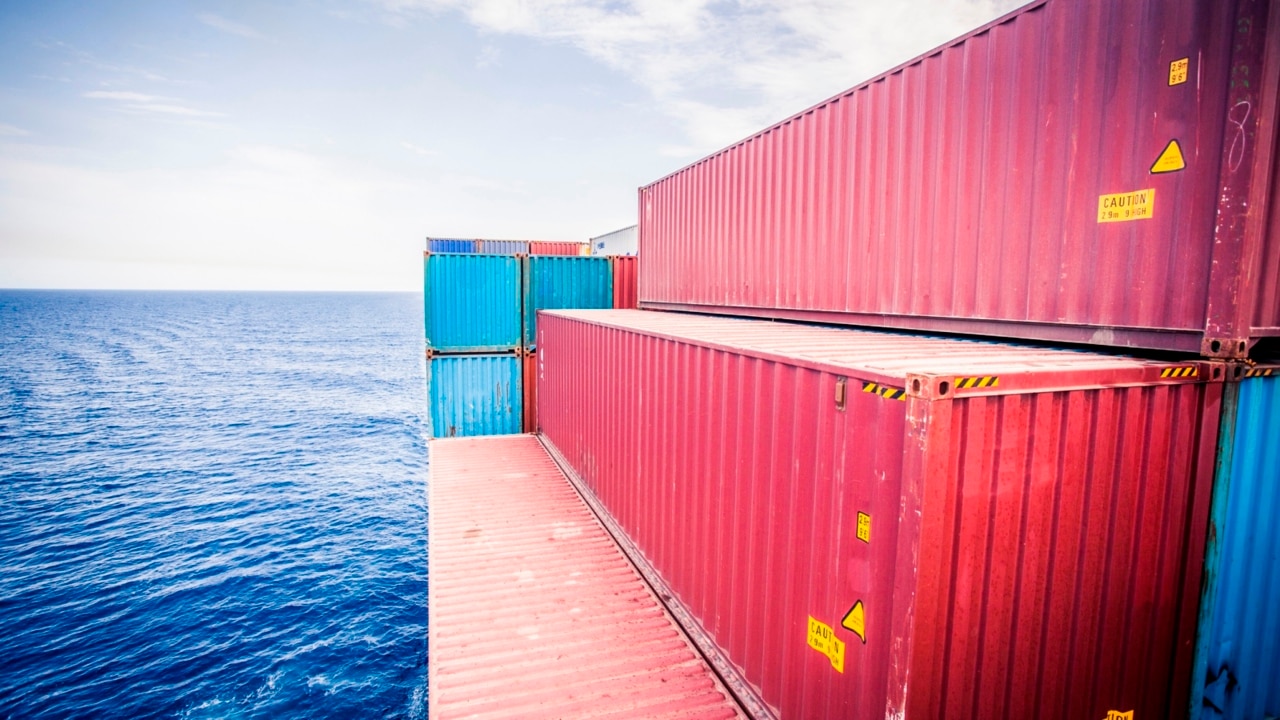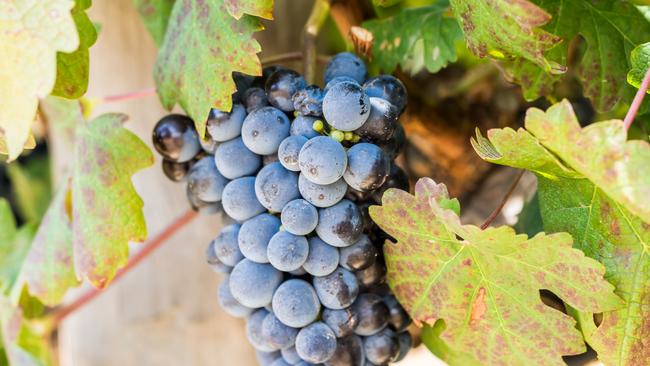A billion dollar hole in Australia’s wine exports is translating to severe pain for growers
As much as 30 per cent of the current harvest could be left to rot as the impact of China’s blockade of the Australian industry continues to be felt two years on.

Business
Don't miss out on the headlines from Business. Followed categories will be added to My News.
This time two years ago Australia’s wine industry was riding high.
Despite the disruption that the Covid-19 pandemic was already causing, exports were nudging the $3bn mark – levels not seen since before the Global Financial Crisis.
It was success largely, but not solely, built on the back of a Chinese market which had grown to $1.2bn for the 12 months to the end of September 2020.
But other markets were performing well too. In the UK, where brands such as Jacob’s Creek have long been consumer favourites, exports increased in value by 18 per cent to $430m and volumes were up also. The US – Australia’s second biggest market at the time – was up 1 per cent to $439m. The industry – at least the parts not affected severely by the 2020 bushfires in the eastern states – was travelling well. But it wasn’t to last.
At the end of November 2020, China slapped huge interim tariffs on Australia’s wine exports, and on March 26 the next year, formalised duties of between 116.2 per cent up to 218.4 per cent on wine, to remain in place for five years.
The industry was caught in the midst of rapidly deteriorating diplomatic relations between the two countries, which is only now starting to thaw. As predicted, the tariffs all but wiped out Australia’s wine export trade with China.
It has been particularly dire for wine grape growers at the commercial’, commodity end of the market, which are largely based in the warmer, irrigated inland areas.
In some regions there are estimates that between 25 per cent to 30 per cent of the red wine grapes won’t be harvested at all. Red wine grape prices are half what they were two years ago for some varietals and vineyards and wineries are starting to hit the market.
Mitchell Taylor, a Wine Australia board member and managing director at Clare Valley-based Taylors Wines, said it was going to be a difficult vintage for many in the industry “We’re getting approached by a lot of growers, both with fruit and also the vineyards, there are a lot of vineyards now on the market,’’ Mr Taylor said.
“Recently I was in the Riverland and they’re talking about an extra 200,000 tonnes that they don’t know what to do with. A lot of it will have to stay on the vine.’’
Mr Taylor said while the tariff decision had an immediate impact, the real effects were only now starting to hit the industry.

“Because it was primarily on red wine, and red wine has that two year cycle at least for the wines to be picked and then matured so that it’s marketable,” he said. “At the time of that decision, we were under-supplied, so our stock to sales ratios on red, we were struggling to keep up.’’ Now, even with an average vintage, the industry will be deeply oversupplied.
Even before the coming vintage, the export figures for the year to the end of September this year show the huge impact of the removal of the China market.
Exports fell in value terms by 11 per cent to $2.01bn, and in volume terms by 1 per cent to 627m litres.
Wine Australia Manager market insights manager Peter Bailey said the results were “mixed’’, with increases in some markets offset by declines in others.
“When mainland China is excluded from the data, wine exports to the rest of the world held steady in value, declining by 0.2 per cent to $1.99bn and increasing by 1 per cent in volume to 622 million litres,” he said. “There was a decline in exports to the UK, Hong Kong and Singapore, which is a result of the return to anticipated shipment levels. This decline to the UK has been delayed compared to other markets with similar Covid-19 consumption patterns, such as the United States and Canada.
“Exports to the North America and Southeast Asia regions are showing growth. In particular, strong growth was recorded in exports to the US, Canada, Malaysia and Thailand.
“Pleasingly, the growth trend in the US and Canada was driven by both ends of the price spectrum; premium wine exports continued to grow and unpackaged commercial exports increased, as shipments of the record 2021 vintage accelerated following a slower than usual start due to global shipping pressures.’’
The number of companies exporting to the US is also at the highest level since 2008 and the low Australian dollar is helping.
But exports to China were just $21m for the full year, down from $1.2bn two years previously.
And uncontracted growers from the inland irrigated regions who are looking to sell their fruit on the market are expecting are pessimistic about the outlook.
Jim Caddy, an industry veteran who chairs the Inland Wine Regions Alliance, representing growers in the Riverland, Riverina and Murray Valley regions, said growers who fed into the bulk wine sector would struggle.
“We look like running into this vintage with a bit over two years’ supply of stock of red wine – that’s going into vintage,’’ he said.
“It wasn’t only China. Had Covid not been around the winemakers would have jumped in a plane and headed to Europe and everywhere else.
“I don’t think the wine industry can really be blamed for any of it.’’

Mr Caddy said while some in the industry were hoping that an improvement in diplomatic relations between Australia and China could lead to lower tariffs, it would not necessarily be a silver bullet. “The Chinse aren’t importing anywhere near as much wine as they used to.,” Mr Caddy added.
China’s wine imports fell by 13.1 per cent in value terms to $US1.7bn ($2.5bn) in 2021, and continued to fall this year, dropping 15 per cent over the first seven months of the year as restrictions, and the removal of premium reds from the market, put a dent in values.
“It would be nice if it comes back, it will help,’’ Mr Caddy said.
“There’s no doubt fruit won’t be harvested this year. You’re probably looking at 25 or 30 per cent of those varieties (Shiraz and Cabernet Sauvignon) not being harvested. That’s pretty substantial when you put it alongside the cut in prices.’’ Mr Caddy said other red varieties wouldn’t be hit so hard and prices for white wine grapes were holding up well.
Mr Caddy said programs to help wine grape growers to assess their business and potentially look at diversifying into other crops would be useful. In the non-export focused sector, Mr Mitchell said small wineries which relied on cellar door sales had fared poorly during the pandemic as well, and some of those appeared to be hitting the market also.
“They’ve found it very difficult to recover their sales, they’ve lost the momentum they had.’’
More Coverage
Originally published as A billion dollar hole in Australia’s wine exports is translating to severe pain for growers





